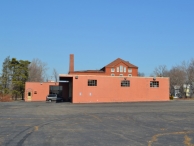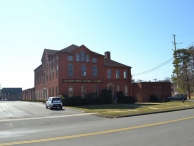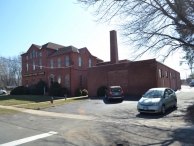Mill Record Wethersfield
RETURN TO ‘FIND MILLS’Disclaimer: Content for these properties was compiled in 2014-2017 from a variety of sources and is subject to change. Updates are occasionally made under Property Information, however the Connecticut Trust for Historic Preservation (dba Preservation Connecticut) makes no representation or warranty that the information is complete or up-to-date.
- Complex Name (Common)
- Bailey Manufacturing Co.
- Complex Name (Historic)
-
- Bailey Manufacturing Co.
- Address or Location
- 207 Church Street, Wethersfield
- County
- Hartford
- Historic Designation
- Associated Mill Community
- n/a
- Historic Information
Companies Associated w/Complex
- Bailey Machine Mfg. Co. 1887-c.1900
- Gra-Rock Co. c.1925-at least 1958
- National Machine Co. c.1900-c.1925
Use (Historic)
Largest Documented Workforce
n/a
Historic Narrative
The Bailey Manufacturing Co. was established in Hartford (date unknown, possibly c.1880), and moved to Wethersfield in 1887. By 1896, the firm had an office in New York City, one in Hartford and the factory in Wethersfield, and advertised its patented letter copying machine and copying pads. Leonard Bailey was assigned several patents: the first in 1882 for copying presses, one in 1888 for printing ink, two in 1896 for a book lettering and embossing press and a ‘type-writing machine.’ Leonard Bailey (1825-1905) was a prominent tool designer specializing in cast-iron planes and spokeshaves, for which he obtained many patents from 1855 to 1886. He ran Bailey Chaney and Co. in the Boston area from c.1861 to 1869 when he sold the firm and the manufacture rights for his patents to Stanley Rule and Level Co. In 1875 he terminated his contract with Stanley, and brought several patent infringement suits against the firm which he did not win. It was after this that he seems to have largely turned his attention from tools to copying presses. The National Machine Co. manufactured printing presses and paper box machines in the factory after Bailey. By 1930, Gra-Rock Co., a ginger ale bottling company, had moved to the facility from Canton, Connecticut, where it remained until at least 1958.
- Architectural Information
Number of Existing Buildings
Four (4) blocks.
Dates of Construction
c.1886; c.1920; post 1947
Architect
n/a
Builder
n/a
Building Type
Architectural Description
The three story brick factory, built c. 1886, has segmentally arched windows, a hip roof with projecting gables over third story palladian windows on the east elevation, and three levels of loading bay doors on the south side. The door to the office block is ornamented with an open pediment and half columns. The single story brick foundry to the north and stock room to the west had been built by 1922; the westernmost single story brick addition is after 1947.
Exterior Material(s)
Structural System(s)
n/a
Roof Form
Roof Material
n/a
Power Source
n/a
Condition
n/a
Condition Notes
A fire in 1952 did not totally destroy the factory, however there was some rebuilding, as evidenced in the brickwork on the front facade.
- Property Information
-
Specific Location
One 0.88 acre parcel on the south side of Church Street on west side of railroad
Adjacent To
Exterior Visible from Public Road?
Yes
Parcel ID / Assessor Record Link
- 222/047 / Link →
Acreage
0.88
Use (Present)
- Commercial
- Other: Purchase in 2021 by Jay Maffe; to be redeveloped into commercial kitchen to make dough and support Square Peg pizza restaurants; part to become retail Square Peg and brewery venue
- Sources
-
Form Completed By
Renée Tribert
Date
March 2016
Bibliography
- Sanborn Insurance Atlases.
- Geer's Hartford City Directory, 1896.
- Special Acts and Resolutions of the State of Connecticut, Vol. X (Hartford: Case, Lockwood & Brainard Co., 1890).
- Annual Report of the Commissioner of Patents for the Year 1896 (Washington: Government Printing Office, 1897).
- Representative View(s)Click on image to view full file







